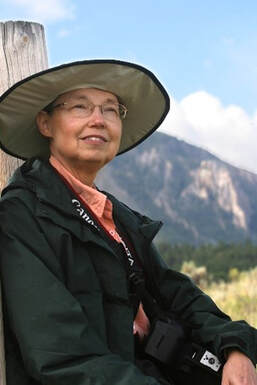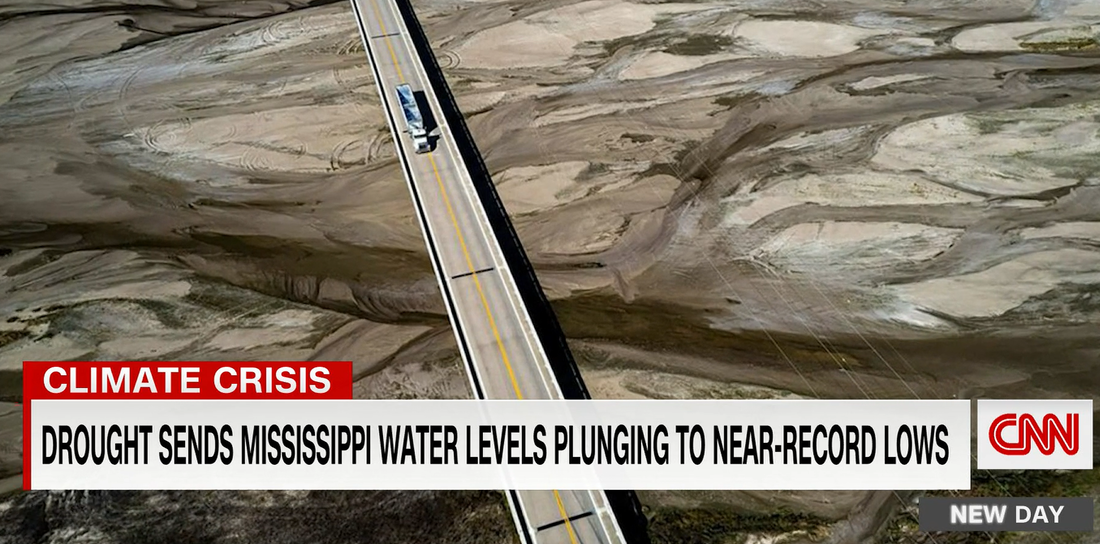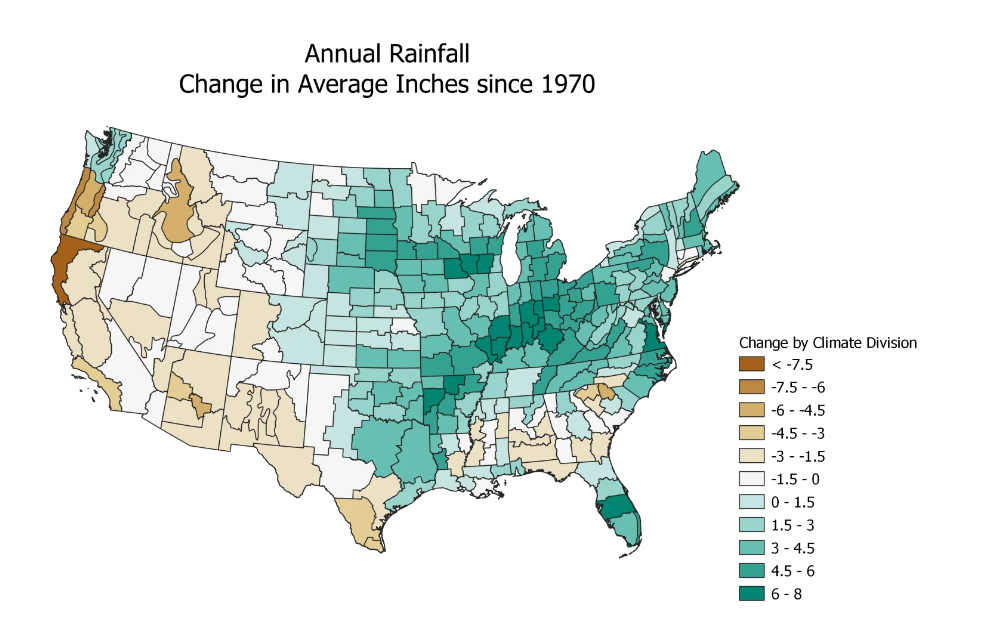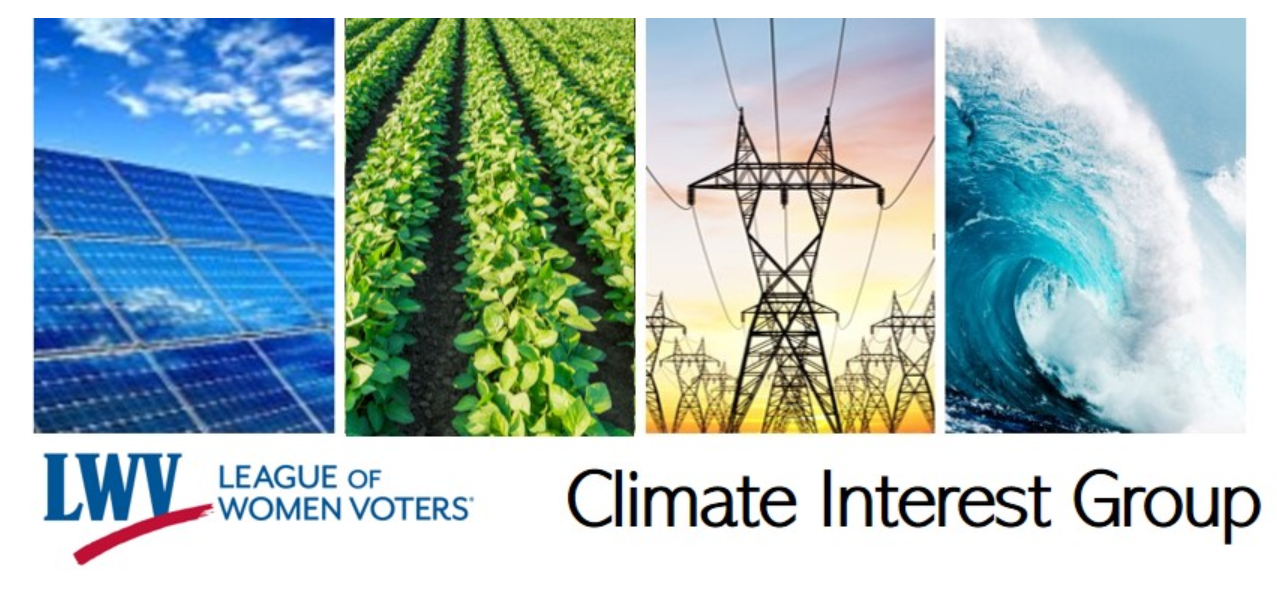|
Thanks to all who attended the LWV UMRR Annual Meeting on Monday, May 22! We had a great discussion in the Business meeting, and then two exciting speakers who helped us to understand how we as local Leagues, joined together in an ILO like UMRR, can also be part of the work of democracy being done by LWV US. Here's the video of our speakers - a good resource for local Leagues to learn and share! LWV's foundation is our local Leagues. We work locally to build and defend democracy, joined together through our State Leagues. Beyond local and state Leagues, we work together regionally and nationally through ILOs and LWV US. We need each other and can depend on each other. United, we stand stronger!
This year we focused on the ties that bind us, and how we can work together more effectively. Our first speaker was Jessica Rolhoff, Midwest Regional Organizer for LWV US. Jessica gave an update (and answered questions) about the LWV US transformation plan, introducing this new LWV US initiative to our members. She also introduced a new social media tool for use within LWV - League in Action. Watch the video to learn more! We then turned to the LWV US Climate Interest Group. As citizens of the world we must protect our planet from the physical, economic and public health effects of climate change while also providing pathways to economic prosperity. To advance League action on this urgent issue, the LWV Climate Interest Group was formed to collaborate nationwide. The Climate Interest Group is a group of League members from across the United States working together to fight climate change. They've organized teams in important climate issue areas to provide materials for local and state Leagues to use in their education and advocacy. Joy Guscott-Mueller is Chair of the Water Team for the Climate Interest Group. She's also the Chair of LWV Lake Michigan Region, the other regional, multi-state Inter-League Organization focused on a major water body. Joy spoke to us about how the work of the Climate Interest Group strengthens the work of ILOs and our member Leagues. The work that the Climate Interest Group is doing is wide ranging and exciting - we send delegates to the international climate summits and have working groups on a number of topics. Joy explains all of this in the video (starting at about 32 minutes); we also have blog posts here and here that look at the work of the LWV US Climate Interest Group. Bio information on our speakers is available on the LWV UMRR Annual Meeting 2023 page, along with the documents that were adopted and approved in the business meeting.
0 Comments
Flood, drought... is there too much water or not enough? What's going on in the Mississippi Basin?10/30/2022
In a series of articles from the Mississippi River Basin Ag and Water Desk at the University of Missouri, journalists from around the Mississippi Basin report what they found. We will share the articles in the UMRR blog, and will continue to follow their work. The Ag and Water Desk is an independent reporting network based at the University of Missouri School of Journalism, in partnership with Report For America and the Society of Environmental Journalists, funded by the Walton Family Foundation. When it Rains: After floods hammered St. Louis and eastern Kentucky this summer, the Mississippi River Basin Ag & Water Desk wanted to know: Is rainfall increasing in the basin? Desk Editorial Director Tegan Wendland worked with the nonprofit climate research and communication group Climate Central to produce new data analyses on this question. The team found that average annual rainfall has increased by upwards of 8 inches in the past 50 years in much of the region while also falling in heavier bouts, causing repeated flooding and raising many questions about how we live in a wetter world. Those facts are part of When it Rains, a new five-part multimedia series from the Mississippi River Basin Ag & Water Desk. The first installment follows. You may have seen these articles in other press; we will run them as a series of monthly installments in the UMRR blog. THE MISSISSIPPI RIVER BASIN IS GETTING WETTER AS CLIMATE CHANGE BRINGS ERA OF EXTREME RAIN, FLOODS (This link will take you to the full article.) By Bryce Gray, St. Louis Post-Dispatch and Connor Giffin, The Courier-Journal Published October 11, 2022 at 4:00 AM CDT Much of the Mississippi River basin is getting wetter, according to a new analysis of federal data, while rainfall events are becoming more intense. At the same time, the western half of the U.S. is increasingly prone to drought. In the early morning hours of July 26, many St. Louis-area residents awoke to floodwater filling their homes, or to the din of blaring car alarms from vehicles getting overtaken by murky brown water. Too much rain was falling far too fast. The weather system dumped more than 9 inches on St. Louis – about a quarter of the city’s annual average – compressed largely within a few hours. That same week, torrential rain storms settled on Eastern Kentucky, where up to 16 inches fell and water rushed into people’s homes so swiftly that many didn’t get out in time. Forty people were killed in Eastern Kentucky. Two people died in St. Louis. Take time to read the rest of the story (thank you, Paul Harvey!) - you will learn about how the intensity of rainfall has increased and is expected to continue increasing; the number of flood-related federal disaster declarations has skyrocketed between 1970 and the 2010's and there's no end in sight.
Membership in the Climate Interest Group is open to all LWV members. The CIG has ten teams that are organized around ten topic areas - you can link to these teams from the CIG website. The teams meet monthly by Zoom, sharing information on research and events linked to their topic. LWV UMRR would welcome members from these groups providing updates on these meetings to UMRR so that we can all benefit from the work of the CIG. If you are interested in being a link between UMRR and these groups, please email us at [email protected]. Thanks!
On Feb 14, 2022, a group of researchers from the Universities of Wisconsin, Kansas, Kentucky and California published a paper that examines the overall impact of the US Renewable Fuel Standard on carbon in our atmosphere. Here's a link to that article in the Proceedings of the National Academy of Sciences. Based on their analysis, the researchers showed that ethanol from corn and other biofuels actually add to green house gases. The researchers conclude that when considerations such as land use changes, increased fertilizer use, impacts of ethanol production and more, corn ethanol can actually be increasing green house gases. Corn ethanol is the current cornerstone of renewable fuels. Corn ethanol was found to be worse for the environment than gasoline in this paper. Researchers from other institutions will add their analyses as they test the hypotheses of this paper. That is how science works, through testing and data, and rigorous discussion based on facts.
Science has become politicized, and it is likely that there will be much bluster and ballyhoo about this research, too. Depending on where you get your news, the interpretation will change. It's good to look at the data that the conclusions are based on and keep an open mind when the research is discussed. This article, on the Civil Eats website, provides a good summary of the paper for non-scientific audiences from an environmental perspective. Limited reading of the article is allowed before the paywall closes. This article is from one of the authors of the paper, is a statement of findings in his own words on the UC Davis website. It is also a good summary of the findings. It's time to send a note to your federal elected officials, urging them to support the Mississippi River Restoration and Resilience Initiative. This Act, now working its way through Congress, has promise to be very important to protecting and restoring our Mississippi River. We learned about this at our Annual Meeting this spring; you can see a video of that meeting to learn more about the Initiative. Here's a link to an Action Request from our sister organization, Friends of the Mississippi River, that will make contacting your legislators easy. This blog has provided information lots of things, including the flip-flop changes that US Water Law has undergone in since the Obama administration adopted the Waters of the US Rule. You can check these out (going back in time) in these posts:
Well, good news for the environment came on October 21, as describe here in a post from the Western Environmental Law Center - here's the highlights - (read the article at this link for the full story)- "Late last night, fishing and recreation advocates won a significant victory for clean water when a federal district court threw out (vacated) a critical Trump Clean Water Act rule. Today’s order from the U.S. District Court for the Northern District of California restores state and Tribal authority to ensure federally permitted activities in rivers and lakes comply fully with state and Tribal law. The Biden administration had planned to revise the rule to an unknown degree through a years-long public process. This court decision erases the Trump rule completely and immediately." On to Soil Health News: The Izaac Walton League has published a new comprehensive review of existing research on soil health and carbon sequestration. This research comes from a University of Maryland scientist, Dr. Sara Via, and shows that increasing the use of common agricultural practices that improve soil health will slow climate change while producing multiple other environmental and economic benefits. In the report, “Increasing Soil Health and Carbon Sequestration in Agriculture: A Natural Climate Solution,” Dr. Sara Via discusses how rebuilding our degraded agricultural soils and acting on climate change are related problems that require urgent action.
Dr. Via writes, “the practices recommended in this report provide a low-cost and immediately available way to reduce atmospheric carbon. Given the wide array of co-benefits associated with these practices, increasing their use is an investment in U.S. agriculture that will pay economic and environmental dividends for years to come.” The report was published in collaboration with the Izaak Walton League of America and the National Wildlife Federation, and is available at this link: www.iwla.org/publications/news/press-release/2021/10/13/viareport If you have questions or would like to discuss the report, contact: Duane Hovorka, Agriculture Program Director, Izaak Walton League of America, [email protected], (402) 804-0033 (cell).  Kay Slama* Kay Slama* Kay Slama, Ph.D., clinical psychologist and LWV UMRR Board member Are you anxious about our climate? Think about it: We’re experiencing more intense heat periods. That leads to increasing droughts and to giant forest fires. The heat is causing more water to evaporate into the atmosphere, creating more severe storms and floods. To stave off the most catastrophic consequences of climate change, the average child born today must emit about eight times less carbon dioxide (CO2) than their grandparents. ARE YOU FEELING ANXIOUS YET? If not, read the national and international climate reports giving us only 8-10 years to make important changes to head off disastrous climate change. Glaciers and permafrost are melting, ocean currents are slowing, and oceans are rising. Millions of people are responding to the effects of climate change by migrating. The last time carbon dioxide levels were this high was 3 million years ago. 250,000 deaths a year from climate change is a conservative estimate. NOW ARE YOU FEELING ANXIOUS? If you are feeling nervous, relax; you’re normal. It shows that you care about our earth and its living things, including people.
Climate anxiety is also known as eco-anxiety, defined as “chronic fear of environmental doom” by the American Psychological Association, which is concerned that climate anxiety is increasing the rates of depressive and anxiety disorders. Nearly a year ago, an American Psychiatric Association poll found that 55% of Americans are somewhat or extremely anxious about the impact of climate change on their own mental health. Some degree of climate anxiety is good. In fact, some substitute the term “eco-awareness.” Some anxiety can galvanize us into taking important actions. But past a certain point, climate anxiety’s effects become increasingly negative, and this is where some substitute the term “environmental trauma.” Living with doom and gloom is very ineffective. We become depressed and hopeless, thinking we can’t do anything about what is happening to our planet. We avoid thinking about climate change (even deny it) or feel immobilized, and we don’t join with our fellow earthlings to change what we can. The climate crisis can create apathy and burnout. A report notes that “the ability to process information and make decisions without being disabled by extreme emotional responses is threatened by climate change.” Fear can cause paralysis. People who are anxious tend to be avoidant, or they shut down and don’t engage. Susan J. Ray wrote A Field Guide to Climate Anxiety: How to Keep Your Cool on a Warming Planet (2020). She said that it’s “a systemic thing that we need all hands on deck to address. We need all the talents, we need all the skills from the artists, to the creative types, to the imagination people, to the children’s book writers, to the teachers to the parents,” in addition to scientists, engineers, and politicians. All of us can contribute in multiple ways to managing our climate. To ease this feeling of anxiety, turn it around. “Instead of focusing on the fear, you should instead focus on what you want to do,” psychologist Janet Swim said. Ray noted that the climate crisis if affecting every part of our lives. She said that we must change how infrastructure works, how transportation works, how we build our homes, how we live on this planet and walk on this Earth. It even affects whether we have children. Ray said that some young adults are choosing “not to have children because they don’t think their children will have a livable future.” So what can we do to deal with our anxiety about the earth’s climate? We can help ourselves feel more of a sense of control by choosing among these approaches:
Want to convince others that climate change is real? Telling them what to do is likely to raise their resistance or aversion to thinking about it—people don’t like that. Instead, just mention, in the course of general conversation, something you are doing for the climate. You can gently ask what their concerns are for their children and grandchildren’s world as climate changes. But hammering and nagging tend to be counterproductive. Be patient with others as you do what you can for the climate. If you are anxious about climate, you are not alone. One of the best ways to cope is to find groups that raise awareness or work to fight climate change. keep the core values of courage, flexibility, resilience, and compassion. Working with others who also want to protect the environment can increase your sense of connection and ease the sensation of struggling alone. That emotional and social support can help boost resilience, increasing your optimism and hope. *Kay Slama, from the Willmar MN chapter of LWV, grew up on a family farm in ND. She is a clinical psychologist who is retired from practice and from adjunct faculty positions with the UM Medical School Dept. of Psychiatry and St. Mary’s University’s doctoral counseling program. She is active with the Sierra Club and the Willmar Area Climate Action Group, and she serves as her church Social Justice Co-Chair. Kay’s most recent professional submission is “Women and the Existential Climate Crisis”, provisionally accepted by The Humanistic Psychologist. She says, “I volunteer for climate and other environmental issues because so much is at stake: Our water, land, soil, health, and the future of our children and the Earth.” She enjoys racket sports, biking, canoeing, reading, music, and gardening, and she spends several months each year in outdoor travel, birding, and photography. Human activities have fundamentally altered our landscape, and the outcome has been degradation of the earth's natural processes and cycles. Conservation practices are used to restore the natural hydrology and ecosystems in a patchwork of promise across the landscape. Can these conservation practices also help to capture carbon in the atmosphere, reducing greenhouse gases and helping to combat climate change? The answer is all too familiar - it depends. Practices like turning marginal cropland into restored wetlands does increase the permanent land cover and can encourage the growth of woody plants, but wetlands also emit methane, a more potent greenhouse gas than carbon dioxide. This 2019 report by the Minnesota Board of Water and Soil Resources finds "... Drainage of wetlands and conversion to cropland can release significant amounts of long-stored carbon through organic matter decomposition. However, wetlands also emit methane, making it difficult to assess their role relative to GHG emissions. Methane emissions are highest in wetlands that are permanently or frequently inundated, while less frequently inundated wetland types such as wet meadows appear to sequester more GHGs (green house gases) than they emit. "
Similarly, the role of other conservation measures - for example cover crops - has to be carefully considered before values for carbon capture are assigned. This UMRR blog post from December, 2020, outlines a growing experiment in development of a carbon market in Minnesota. Now, the budget proposed by Minnesota Governor Tim Walz for the Board of Water and Soil Resources includes funding for expansion of carbon markets in Minnesota - see page 46 here. Let's be clear here. Conservation practices are a good thing. LWV UMRR strongly agrees that cover crops and reduced tillage are vital climate adaptation and resilience measures, providing undeniable benefits to soil health and farm resilience. Improved soil health, keeping water on the land, and restoring habitat will have benefits broadly, including making our landscapes more resilient to the added stresses of our changing climate. Our concern is that cover crops and no-till may play a minimal role in sequestering carbon. LWV UMRR is joining with other environmental organizations in Minnesota in requesting that more consideration be given to scientific data on carbon capture before the state more strongly commits to including cover crops and no-till as eligible practices in a carbon market. Watch the LWV UMRR Blog for continued reporting on this issue. The problems of water quality are shared by rural and urban Minnesotans. The solutions have to be shared, too. The need to reduce the amount of pollutants that go in to the river unites both agricultural and industrial interests. To help to bridge the ag-urban divide and unite interests, forums have been organized to bring people together. The second annual forum was held on December 16, 2020. According to the Minnesota Pollution Control Agency's post on the conference, ""The key issue initially fueling the conferences centers on the question, how can the urban and rural agriculture worlds work together to address water quality and other environmental issues? Cities face daunting costs for wastewater treatment. Agriculture dominates the rural landscape, and has a major impact on water quality. What if both worked together? While environmental quality is the goal, getting there is all about the economy. And climate change. Leif Fixen of The Nature Conservancy promoted the Ecosystem Service Marketplace Consortium (ESMC), which is developing the processes and technology that would pay farmers for “carbon credits” — a measure of capturing carbon to help mitigate global warming." Click the picture below for more information on this pilot project. The first Ag-Urban Partnership Forum was held on November 18, 2019 and is documented in a detailed .pdf found at
 Everyone talks about the weather, but no one does anything… Well, we now know that we have to do something about the climate, and that we can start by talking about climate change and what it means to our lives, our environment and our children’s future. (Did you notice that we said “climate change”? Yes, climate is different from weather, and we need to both talk about it and do something!) LWV Upper Mississippi River Region (LWV UMRR) has added a focus on climate change to our action portfolio. We are urging our member Leagues to plan programs on the topic – and have an option to offer with prepared material to do it! LWV Dane County (Madison, WI) has made climate change their topic for action this year. They are sponsoring four forums (link) that will be available for local Leagues to stream. Materials packets are prepared for each forum so viewers will be able to learn about the topic in advance and have good discussion after the program. These packets are rich with information and geared to help build understanding, not detailed scientific tomes. LWV DC does an excellent job with both the packets and with finding a good range of speakers who bring broad expertise to the subject; this would be a great way for a local League to begin the conversation on climate change. As a bonus, their website features a weekly column titled “Climate Corner”, featuring a medley of resources and information that highlight personal actions, diversity and equity perspectives, and additional learning opportunities, all related to climate change. The first of the four forums took place on September 4 - you can watch the video here. Titled “Why Climate Change is a Public Health Emergency”, the featured speakers were Ralph Petersen , Ph.D. (UW–Madison Space, Science and Engineering Center), Andrea Kaminski (Board Director and former Executive Director of LWVWI) and Dr. Claire Gervais , M.D., (UW Health Clinics). Looking ahead, LWV DC is planning these additional forums: • November 6, 2019, focusing on government's role in combatting climate change, • February 5, 2020, focusing on agriculture as a solution and • April 1, 2020 focusing on water impacts. LWV UMRR’s Co-Presidents, Mary and Steve Ploeser, are members of the LWV Dane County committee working on the forum. We are proud to share their work with our member Leagues, and thank them for the commitment to LWV and the environment. – Gretchen Sabel, Communications Director, LWV UMRR
The LWV US Tool Kit for Climate Action is an excellent resource for getting started. Take some time to explore this website - the menu on the right has links to a wide array of information, advice and examples.
|
| LWV Upper Mississippi River Region | UMRR blog |











 RSS Feed
RSS Feed